|
|
|
|
|
|
|
Achi-Kochi Japan
Showing many places to visit and foods to eat in Japan
|
|
|
|
|
|
|
|
|
|
|
|
|
Japan
> Hokkaido region
> Kussharo-Ko and Mashu-Ko Lakes
|
|
|
|
|
|
|
Kussharo-Ko and Mashu-Ko Lakes
Hokkaido ( Achi-Kochi Japan )
|
|
|
|
|
|
|
|
|
|
|
|
|
( "Achi-Kochi" in Japanese means "Here and there" in English. )
Teshikaga-cho Town, Hokkaido

Teshikaga-cho ( above ) is a small town located in the east of Hokkaido island. Though its population is less than 7,000, many tourists visit the town, where located are Kussharo-Ko and Mashu-Ko Lakes, both of which compose of Akan Mashu National Park as well as Akan-Ko Lake does.
Tourists enjoy viewing landscapes of the two lakes, where they enjoy fishing, canoeing, cycling, hiking and so on. In addition to two lakes formed by volcanic activities, tourists are attracted by Onsen Hot Springs, Mount Io ( a volcano ), Ainu Folk Museum, all of which are located near the lakes.
|
Kussharo-Ko Lake

There is Bihoro Pass ( altitude 525m ) along National Route 243 in Teshikaga-cho. An observatory near Bihoro Pass is one of the best places to overlook Kussharo-Ko lake ( above ), which is the largest caldera lake ( circumference 57km ) in Japan. A hundred thousand years ago, the center of a volcano collapsed and Kussharo Caldera was formed while Bihoro Pass is one of the remainings of the volcano.
There at Bihoro Pass is not only an observatory but also roadside station, toilets and restaurant.
|
Kussharo Kotan Ainu Folk Museum

Ainu is an indigenous people who live in Hokkaido and its surrounding regions. There used to be an Ainu Kotan, a small settlement of Ainu people, on the south shore of Kussharo-Ko Lake. Now there on the site of the Kussharo Ainu Kotan is Ainu Folk Museum, which exhibits various items related to lives, culture and history of Ainu people such as their shoes made of salmon skin ( above ).
In the museum, visitors could watch videos in English showing their traditional festivals, rituals and so on. The museum is open through Mid April - November.
|
Headwaters of the Kushiro River
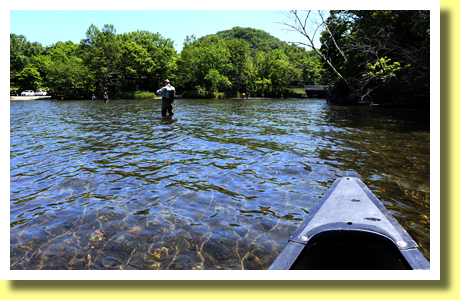
The place, where Kussharo Ainu Kotan used to be located, was called " Kut-char " by Ainu people. " Kut-char " in their language means a place where waters flow out of a lake and the word is the origin of " Kussharo ", the name of the lake. The above photo shows " kut-char " where the Kushiro River flows out of Kussharo-Ko Lake and those who enjoy fishing therearound. The river flows from the lake through Kushiro Shitsugen ( Kushiro Wetland ) to the Pacific Ocean.
Canoeing tours, paddling from Kussharo-Ko lake down the headwaters of the Kushiro River with a local guide, could be arranged for tourists by some local companies.
|
Canoeing Down the Kushiro River
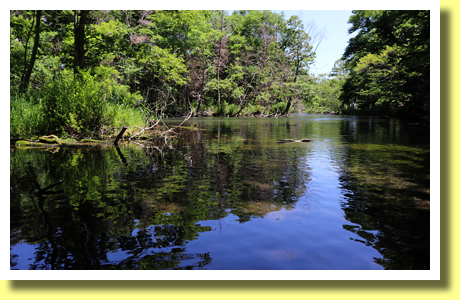
Actually my wife and I had not experienced canoeing at all when we started out. However an experienced guide helped us enjoy the first experience of canoeing tour from the lake down the headwaters of the Kushiro River, which was gentle whitewater stretches ( above ) surrounded by forests.
|
Wildlife
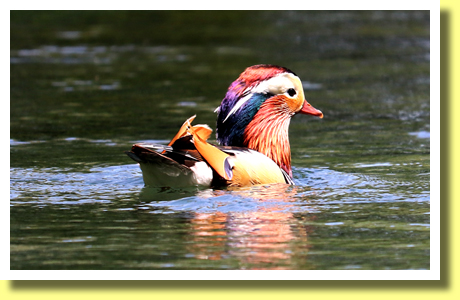
During paddling down the upper reaches of the river, no building had been seen nor engine sound heard. The tranquility had been disturbed by a mandarin duck ( above ). Mandarin ducks stay in the south of Japan in winter and move back in spring to the north such as Hokkaido island.
During canoeing, some could see Yezo Sika deers, who come down to the riverbank to drink water. Also red-crowned cranes, white-tailed eagles and some more could be seen near the river.
|
Sunayu

There are some Onsen Hot Springs surrounding and near Kussharo-Ko Lake. Above photo shows Sunayu, one of such Onsen, located on the east shore of the lake. " suna " in Japanese means " sand " while " yu " does " hot water ". Natural hot spring waters run under the sand. So if tourists dig a hole in " Sunayu " beach, hot spring water would gushes out. It could be their own footbath.
There are a parking area, shops, a food stall, toilets and campground near Sunayu Beach, where tourists could enjoy swimming in summer. Kussharo-Ko Lake freeze in winter except the surface near Sunayu. So Sunayu Beach is one of favourite sites of swans who move from Siberia in winter.
|
Tsutsuji-ga-hara Nature Trail
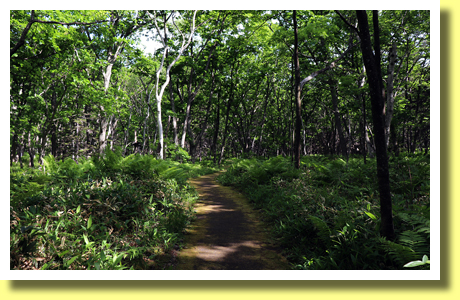
Tsutsuji-ga-hara Nature Trail ( Length 2.5km ) leads tourists to Io-Zan ( Mount Io ), an active volcano from Kawayu Eco-Museum Centre, which is located in Kawayu Onsen, an Onsen hot spring resort near Kussharo-Ko Lake. The trail starts in forests ( above ) of Sakhalin spruce and Japanese oak, then through shrublands, where tourists would see white flowers of labrador tea in June-July.
|
Io-Zan ( Mount Io )
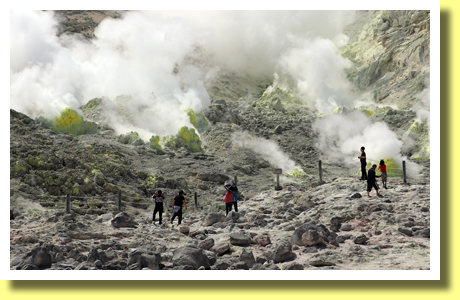
Io-Zan ( Mount Io - altitude 512m ) is an active volcano located near Kussharo-Ko Lake, which was formed by volcanic activities. Though it is not allowed to climb up to the top of Io-Zan, tourists could see lots of yellow vents ( above ) spouting hot steam and volcanic gases. It is said that there are more than 1,500 vents on the side of Io-Zan.
Ainu people call Io-Zan " Atusa-nupuri " which means bare mountain. Io-Zan spouts sulfar, which acidifies the soil so that very few species of plants could survive there. " Io-Zan " in Japanese means sulfar mountain. Io-Zan, Mount Io had been mined for sulfar through A.D.1877-1963.
|
Mashu-Ko Lake
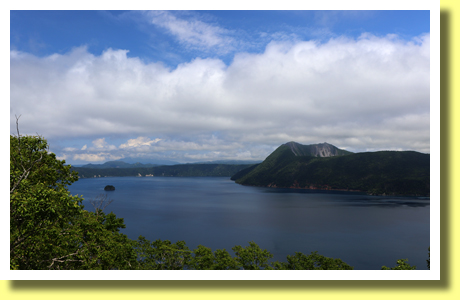
Mashu-Ko ( Lake Mashu - above ) is another one of lakes located in Teshikaga-cho Town. It is one of the most beautiful lakes in Japan and is popular among tourists as well as Kussharo-Ko Lake is.
Mashu volcano collapsed 7,000 years ago due to a major eruption and formed a caldera lake, Mashu-Ko, whose circumference is about 20km. Mashu-Ko, into which no stream flows, is famous for the clarity of its waters, which is not affected by sediment nor by plankton.
|
Copyright (c) 2021 Achi-Kochi Zanmai Co., Ltd.
|